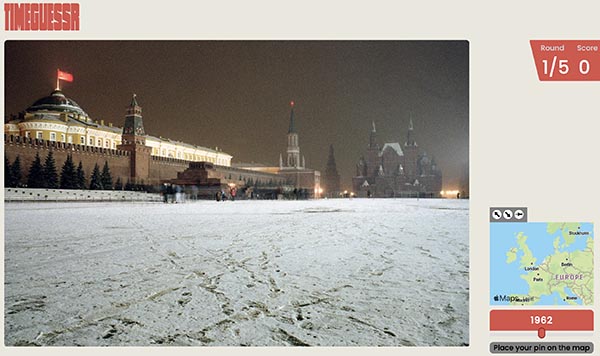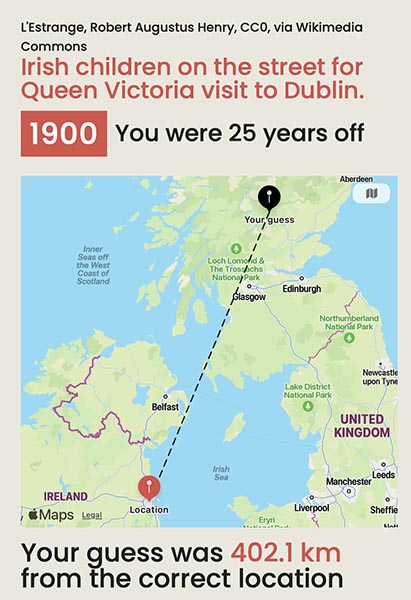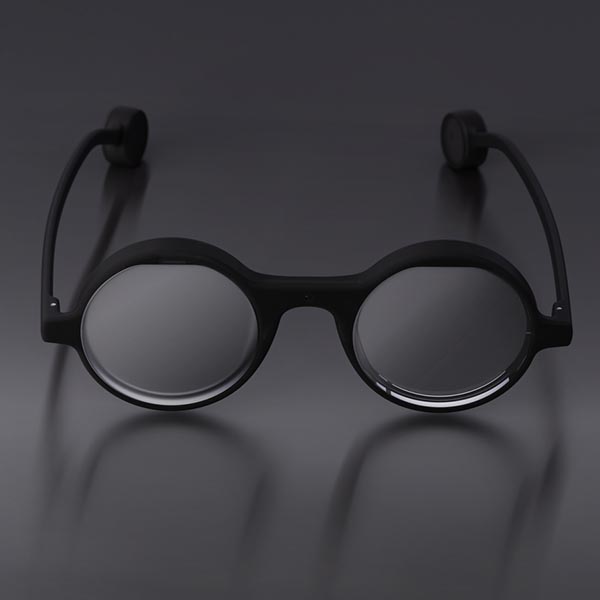A Nice Pair
Most graphic designers spend an inordinate amount of time on “font pairing,” or finding typefaces that can be used together in the same design. As we all know, fonts can “clash” just as much as colors, while well-paired typefaces can take a design to the next level. Now, via Print magazine, Monotype has launched an (wait for it…) AI-powered font pairing tool. Says Monotype:
Like pairing anything, it’s a subjective practice with infinite possibilities. There are many good choices, some that are bad, and a few that are exceptional.
Now imagine if you had an AI tool that considered your expertise and emotions as your personal assistant. It could offer exciting, delightful ideas, and increase the speed and quality of your creative decisions. These suggestions could even act as a soundboard or a source of inspiration. We are using AI to increase the depth and breadth of our font pairing suggestions.
…Our font pairing AI is an engine of typographic curation, easing the anxiety of overwhelming options and disruptive indecision. The search is catalyzed by your unique starting point, escorted by expertise, enhanced by AI, and finally, suggested to you.
Now, what about chart colors?
Where In the World…”
Want to decrease your productivity exponentially? Try the game TimeGuessr. Basically, you are presented with an old photograph and you have to identify a) where it was taken (by clicking on a map) and b) what year it was taken (by moving a slider).


It can be harder than you think…


Photo Finishes
Speaking of old photos, Laughing Squid has a flashback: how did journalists and news organizations transmit “wire photos” back in the days before the Internet? It was a technology called Wirephoto, that worked kind of like a fax machine: an original was scanned into the device as a series of fine lines and then transmitted over phone lines to a receiver. The process was pioneered by Édouard Belin whose 1913 Bélinographe scanned an original via a photocell and transmitted it over ordinary phone lines.

Belinograph BEP-2V telephotograph, Édouard Belin, 1953.
This short film shows the process in action. Get your Jam Handy:
In 3D
WhatTheyThink contributor Mark V (heir to the throne of Mark IV) rounds up some recent stories about 3D printing in action. First, the US Coast Guard has been using 3D printing to create marine navigational aids.
One successful example of this is the VRB-25 optical system, a standard 12-volt rotating light beacon with an incandescent bulb, used in lighthouses along the United States coastline.
Then, conservationists are 3D printing coral reefs as part of an effort to save endangered marine ecosystems.
And now you can buy a 3D-printed football—a steal at $89.
Introducing the ultimate game changer for football enthusiasts - the 3D Printed Slant 3D Football! Expertly crafted using cutting-edge 3D printing technology, this football is not just a piece of sports equipment; it's a statement. Made from 100% Thermoplastic Polyurethane (TPU), this football combines durability with flexibility, ensuring an exceptional grip and feel that traditional footballs can't match.

So instead of “tossing around the pigskin” you can “toss around the thermoplastic polyurethane.”
AI-Yi-Yi, Part the Infinity: Making A Spectacle of Yourself
Here we go. It had to happen: AI eyeglasses (AIglasses?). Say what? Startup Brilliant Labs is now taking pre-orders for Frame—yep, AI-driven glasses. The website doesn’t really explain what specifically they do:
Frame is designed to be worn as a pair of glasses with a suite of AI capabilities out of the box. Whether your daily pair of specs or workbench prototyping tool, Frame is ready for the journey.
A brace of videos on their YouTube channel demonstrates how they can be used to get more information about a bottle of wine by staring at the label (vs. just reading the label, apparently):
Or staring at a cake and determining how much of it you can eat and stick to your diet:
Core77 is having none of it.
First off, it’s hilarious that the only two demos on their YouTube channel (at press time) show…daily activities for San Francisco residents: Wine shopping, and ensuring they’re sticking to their diets. I think the problem with a lot of tech developed in San Francisco is that it all seems designed for people who live in San Francisco.
They suggest some better questions to ask your glasses (?):
- “My kid’s orthodontist says it’s gonna cost 3 grand, is he ripping us off?”
- “Why is my car making that noise?”
- “How can I get directly to a customer service rep without going through submenus?”
- “What happened to my package delivery?”
- “Is this somebody I know and have met, or is he just a popular character actor that I can’t place my finger on?”
- “How much fentanyl is too much fentanyl?”
There is also a lag time as the glasses looks things up, sort of a colloquial version of the U.S.S. Enterprisecomputer saying “Working…”

Another question might be, “Why do you hate apostrophes?”
And another might be: “Do they have to look like that?”

Or “$349? Really?”
Frame also has an AI-enabled monocle, if you’re going for that German-general-in-a-World-War-II-movie look.
Tippi Hedren on Line 1
Pay phones may be a thing of the past—at least for talking to humans—but what about birds? Would birds use a pay phone? Well, no, not personally. But if you find yourself in Takoma Park, Md., check out the Bird Calls Phone. Pick up the receiver, and instead of a dial tone (remember that?) you’ll hear a mourning dove. Dial a number, and you’ll hear a different call from a local bird. (If you’re into British slang, that sentence could have a whole other meaning.) Says Atlas Obscura:
The Bird Calls Phone was created by local resident David Schulman, who re-wired an old payphone in 2016 as a submission to a public art contest. Schulman is a composer and audio producer, and enlisted the help of several friends—and the Cornell Lab of Ornithology—to create the interactive art piece. Pushing the phone’s buttons will also play facts about the different bird species.
By the way, they are presumably recordings of birds, not actual live birds hanging out in a call center somewhere. (“Live birds are standing by waiting for your call!!!”) (Another sentence that would mean something else in British slang.)
Saving your Skin
Are you elaborately inked? Do you worry about what will happen to your tattoo(s) after you shuffle off this mortal coil? Well, apparently some people do, and there is a funeral home that is on it. Save My Ink Forever is a company based in a funeral home in Northfield, Ohio. Says WYSO:
They say they’re the only company in the world offering post-mortem tattoo preservation: they remove the skin, they preserve it and they frame it for families.
…[Kyle Sherwood] and his father, Michael Sherwood, had already offered creative memorial options like solidified cremains as decorative stones. But then a friend told them he wanted his tattoo preserved after he died, and they took up the challenge.
The learning curve sounds like the basis for a bad 1980s horror movie.
They needed practice. So they worked with tummy tuck patients to pay for tattoos on areas of skin that would be removed that they could then work to preserve.
The process sounds a bit creepy, but who are we to judge?
“Everyone has their own process when it comes to grief, and we can’t tell you how to grieve and our thought process is that if this eases the burden even a little bit, what we’re doing is, you know, completely worth it.”
Fair point.
It’s Not the Graphene, It’s the Humidity
Was it a good week for graphene news? It’s always a good week for graphene news! Evercloak raises $1.5 million in seed funding to cut energy demands in air conditioners. From (who else?) Graphene-Info:
Canada-based Evercloak, that aims to turn the theoretical potential of membrane-based dehumidification into a viable commercial option with its method of manufacturing graphene composite membranes at scale, has announced that it has raised CAD$2 Million (around USD$1,475,000) in an oversubscribed seed round of investment, driven by interest in its HVAC technology.
By reducing the amount of electricity required to dehumidify air — the most energy-intensive part of cooling — Evercloak’s membrane-based solution can cut the energy demands of air conditioning in half.
They should try Steven Wright’s idea: put a humidifier and a dehumidifier in the same room and let them fight it out. Either way, graphene would win.
Keeping the Beet
When in Vienna, be sure to catch a concert by the Vienna Vegetable Orchestra. And, yes, it’s exactly what it sounds like: musicians/chefs play music on instruments crafted from vegetables. Says Atlas Obscura:
The Vegetable Orchestra performed its first concert in April 1998: Twelve friends, none of them musicians, all eager to create something new. Before the performance they had turned their favorite vegetables into instruments, coaxing melodies out of carrots, leeks, and lotus roots.
And if Pete Townshend had been a member:
Once each instrument had served its purpose, a cook chopped it and added it to the pot of soup simmering on stage.
Since their formation, they’ve made around 100 instruments, released four albums, and performed more than 300 concerts around the world.
Their mission hasn’t changed: using fresh vegetables to create music, or, more precisely, to create Gemüsik, a portmanteau of the German words for “vegetables” and “music.” Building fresh instruments before each performance requires 100 to 150 kilograms (220 to 330 pounds) of vegetables, two hours of time, and an impressive collection of tools. “We always bring our own equipment—twenty knives, wood and metal drills, longer drills, six power drills…and a first aid kit,” laughs Ingrid Schlögl, a classically trained musician and singer who joined the orchestra in 2004.
Stop the World, I Want to Get Off!
Laughing Squid asks a question that may be no laughing matter: what if the Earth suddenly stopped rotating? Assuming the atmosphere didn’t stop moving, as well…
Essentially, the winds would be so catastrophic that nearly all life on Earth would be eradicated. And that’s just the start.
Those humans who work or hide underground would probably remain safe but completely disconnected from the outside world, the oceans would dissipate, and the length of a day would be completely redefined, although the moon would still follow its monthly cycles.
Randall Munroe of xkcd and Henry Reich of MinutePhysics explain it via animation:
This question also came up some years ago on an episode of the British panel quiz show QI, and, among other consequences, moles would be very confused.
Art Escalation
If you find yourself in Vilnius, the capital of Lithuania, be sure to check out the Escalator Slide, a piece of public art by Lithuanian artist/designer Julijonas Urbonas. Via Core 77:
“Corporate austerity meets playground pleasures. The business-suit-friendly slide welcomes the white-collar workers for a moment of escape from their sedentary daily routine. Brushing the office-chair-ridden backs against mirror polished stainless steel becomes the gasping-for-air replacement of a coffee break.”


It was installed in 2020, and is apparently still there. Although, as Mitch Hedberg would say, now it’s just stairs.
Post Parade
The name Bill Post may not mean much to you, but he changed breakfast as we know it. Basically, he invented Pop-Tarts, and he has sadly passed away. Says the New York Times:
Mr. Post led the bakery plant that developed the first Pop-Tarts for Kellogg’s in 1964, his son said. The snack quickly became a popular treat for many people in the United States, including Mr. Post’s children, who were among the first taste testers.
…When Kellogg’s approached Mr. Post in 1964, he was managing Hekman’s plant in Grand Rapids. At the time Kellogg’s competitor, Post, was creating a toaster pastry called “Country Squares,” which was later named “Toast’em Pop Ups.” Executives from Kellogg’s, which sold cereal, asked Mr. Post if his plant would have the capabilities to create a similar product.
“Being the absolutely positive person that he was,” his son Dan recalled, “he said, ‘absolutely, give me two weeks.’”
And he popped ’em right out.
This Week in Printing, Publishing, and Media History
February 12
1804: German anthropologist, philosopher, and academic Immanuel Kant dies (b. 1724).
1809: English geologist and theorist Charles Darwin born.
1809: Sixteenth U.S. President Abraham Lincoln born.
1885: German publisher and founder of Der Stürmer Julius Streicher born.
1924: George Gershwin’s Rhapsody in Blue receives its premiere in a concert titled “An Experiment in Modern Music,” in Aeolian Hall, New York, by Paul Whiteman and his band, with Gershwin playing the piano.
1948: American computer scientist and engineer Ray Kurzweil born.
1950: English singer-songwriter, guitarist, and producer Steve Hackett born.
1994: Four thieves break into the National Gallery of Norway and steal Edvard Munch’s iconic painting The Scream.
February 13
1914: In New York City, the American Society of Composers, Authors and Publishers is established to protect the copyrighted musical compositions of its members.
1923: American general and pilot, and first test pilot to break the sound barrier Chuck Yeager born.
Buzz saying Happy Birthday to Chuck Yeager is why god made Twitter. https://t.co/fgzL9Ct4Lh
— Charles P. Pierce (@CharlesPPierce) February 14, 2019
1950: English singer-songwriter and musician Peter Gabriel born. Here comes the flood.
1967: American researchers discover the Madrid Codices by Leonardo da Vinci in the National Library of Spain.
February 14
1778: The United States flag is formally recognized by a foreign naval vessel for the first time, when French Admiral Toussaint-Guillaume Picquet de la Motte renders a nine gun salute to USS Ranger, commanded by John Paul Jones.
1819: American journalist and politician, and inventor of the typewriter Christopher Latham Sholes born.
1849: In New York City, James Knox Polk becomes the first serving President of the United States to have his photograph taken.
1876: Alexander Graham Bell applies for a patent for the telephone, as does Elisha Gray.
1894: American actor and comedian Jack Benny (né Benjamin Kubelsky) born.
1924: The Computing-Tabulating-Recording Company changes its name to International Business Machines Corporation (IBM).
1961: Element 103, Lawrencium, is first synthesized at the University of California. Hopefully they sent an atom or two to Michael Battaglia.
1975: English novelist and playwright P. G. Wodehouse dies (b. 1881).
1989: Iranian leader Ruhollah Khomeini issues a fatwa encouraging Muslims to kill Salman Rushdie, author of The Satanic Verses.
1990: The Voyager 1 spacecraft takes the photograph of planet Earth that later become famous as Pale Blue Dot.

Seen from about 3.7 billion miles, Earth appears as a tiny dot (the bluish-white speck approximately halfway down the brown band to the right) in the darkness of deep space. Makes you think, don’t it?
2005: YouTube is launched by a group of college students, eventually becoming the largest video sharing website in the world and a main source for viral videos.
February 15
1564: Italian astronomer, physicist, and mathematician Galileo Galilei born.
1870: Stevens Institute of Technology is founded in New Jersey, USA and offers the first Bachelor of Engineering degree in Mechanical Engineering.
1946: ENIAC, the first electronic general-purpose computer, is formally dedicated at the University of Pennsylvania in Philadelphia.
1954: American animator, producer, and screenwriter Matt Groening born.
1972: Sound recordings are granted U.S. federal copyright protection for the first time.
2001: The first draft of the complete human genome is published in Nature.
February 16
1740: Italian publisher and engraver Giambattista Bodoni born.
1933: The Blaine Act ends Prohibition in the United States. We’ll drink to that.
1937: Wallace H. Carothers receives a United States patent for nylon.
1944: American novelist and short story writer Richard Ford born.
1968: In Haleyville, Alabama, the first 9-1-1 emergency telephone system goes into service.
1978: The first computer bulletin board system is created (CBBS in Chicago).
February 17
1673: French actor and playwright Molière dies (b. 1622).
1781: French physician and inventor of the stethoscope René Laennec born.
1890: American publisher and politician and inventor of the first commercially successful typewriter Christopher Latham Sholes dies (b. 1819).
1904: Madama Butterfly receives its première at La Scala in Milan.
1933: Newsweek magazine is first published.
1996: The Rematch: In Philadelphia, world champion Garry Kasparov beats the Deep Blue supercomputer in a chess match.
February 18
1564: Italian sculptor and painter Michelangelo dies (b. 1475).
1745: Italian physicist and inventor of the battery Alessandro Volta born.
1885: Adventures of Huckleberry Finn by Mark Twain is published in the United States.
1896: French author and poet André Breton born.
1911: The first official flight with airmail takes place from Allahabad, United Provinces, British India (now India), when Henri Pequet, a 23-year-old pilot, delivers 6,500 letters to Naini, about 10 kilometres (6.2 mi) away.
1930: Elm Farm Ollie becomes the first cow to fly in a fixed-wing aircraft and also the first cow to be milked in an aircraft. (That’s why you never want to be in Southwest’s C boarding group.)
1931: American author, Pulitzer Prize winner, and Nobel laureate Toni Morrison born.















